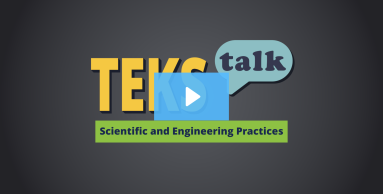
Knowledge and Skills Statement
The further explanation is designed to be a resource for educators that helps them better understand the topic their students are learning. Further explanations may be written at a more complex level than would be expected for students at the grade level.
A typical structure for a discussion is Claim-Evidence-Reasoning (CER). A claim is an answer to a scientific question stated as a fact. Students gather evidence to support their claims. The evidence should justify the accuracy of the claim and include data points, scientific observations, or a summary of data. Multiple sources should support the evidence. The reasoning connects the claim and the evidence logically. It should also explain why the claim is reasonable based on scientific ideas and principles.
Research
Monteira, Sabela F., and María Pilar Jiménez-Aleixandre. “The Practice of Using Evidence in Kindergarten: The Role of Purposeful Observation.” Journal of Research in Science Teaching 53, no. 8 (2015): 1232–1258. https://doi.org/10.1002/tea.21259.
Summary: The article explains how using evidence can benefit Kindergarteners by providing the results of a study including early childhood students. This study found that having students practice using purposeful observation as evidence is beneficial and helps students develop a deeper understanding of the content they are studying.
Research
Poe, Mya, Neal Lerner, and Jennifer Craig. 2010. Learning to Communicate in Science and Engineering: Case Studies From MIT. Massachusetts: The MIT Press. https://doi.org/10.7551/mitpress/7702.001.0001
Summary: In this book, Learning to Communicate in Science and Engineering: Case Studies From MIT, the author includes studies of students from diverse backgrounds as they partake in various communication-heavy science and engineering classes. Students are tasked with the challenge of writing and communicating like scientists.
